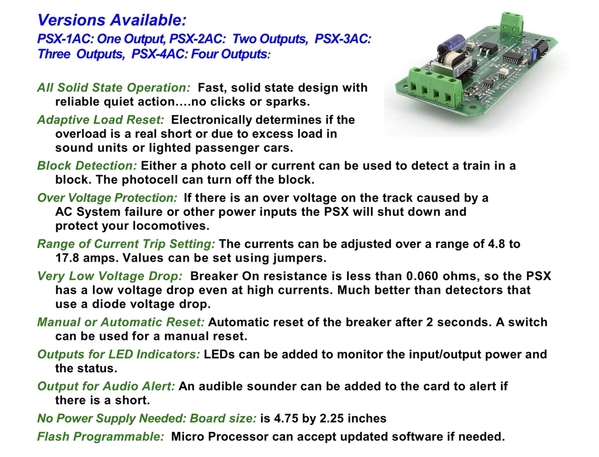Put the choke in the hot leg- red terminal. The logic is that for TMCC/Legacy and other reasons you want outside rail as common or U throughout the layout. Putting the inductor in the U leg would not necessarily be the worst thing, but just to keep things straight and logical this is my reasoning.
Great post and diagrams here https://ogrforum.ogaugerr.com/...3#153603996468982503
The inductor is fine and that is what I used or very similar.
On the TVS, you linked a 500W rated part and I'm not sure on the trip voltage. I use 1500W rated parts and typically the 36 or 39 part number which were higher voltages. Here's the logic and reason why. You want the TVS o clamp spikes for sure, however, just normal operation of trains generates some spikes. We need the TVS to be able to handle and not clamp and be destroyed by common spikes generated every day, but the destructive higher spikes that could damage equipment need to be clamped. That's why both the wattage rating and specific part number clamp voltage range through experimentation by others of what gives you a safety net that should prevent damaging spikes in voltage, but not catch the minor spikes of normal operation and cause the TVS to fail and die early.
Think of it like a smoke alarm. If I goes off all the time- eventually you get mad and disable it. Then you have no protection. You need it to work when it needs to, but not go off all the time during normal events.
Now caveat, I was going off part numbers so again, we new that 33, 36, and 39, all the way to 51 were the common recommended TVS diode numbers- however the actual rating is not that exact number. Your part linked might be a different number system part and you chose clamp voltage and that value is correct.
I'm copying and pasting a blurb from a post I made previously:
I say all this from the perspective of replacing a PILE of TVS diodes in a stack of devices last week. Example was 3 Z controllers from MTH Z1000 sets, TIUs, and some other equipment. The interesting thing is the voltage values and the fact they STILL failed. Example, TIUs and Z controllers use the 1.5KE51CA in the variable voltage section, where the output of the TIU is a lower 1.5KE33CA, and then an often recommended TVS for transformers and track add ons is 1.5KE36CA
The point being, 33 is the lowest, and 51 is the highest, so I'm thinking if a 51 blows, that is one heck of a spike on the track. In the case of the 51s blown, the electronics were also damaged (FETs in the variable voltage circuit).
I'm just trying to give perspective here on why a TVS value is chosen. If the TVS value is too high, then spikes get through and can damage the electronics. If too low of the TVS voltage value is chosen, it does a great job of protecting electronics from voltage spikes, but may in turn fail more often due to catching more spikes from everyday events. Somewhere around the suggested value of the 1.5KE36 is a good value and proven by field testing and experience. Again, just trying to give perspective here and understanding. MTH TIUs have been using 33s internally, the variable channels have a 51 across the circuit as does the Z controller. By using externally 36s, I think we strike a value that should help protect the internal ones and provide a reasonable headroom for non damaging spikes on a given layout that don't kill TVS diodes too often.
Point being, I think in a previous discussion the recommended part now is
https://www.digikey.com/en/pro...on/1-5KE39CA/7357041
















